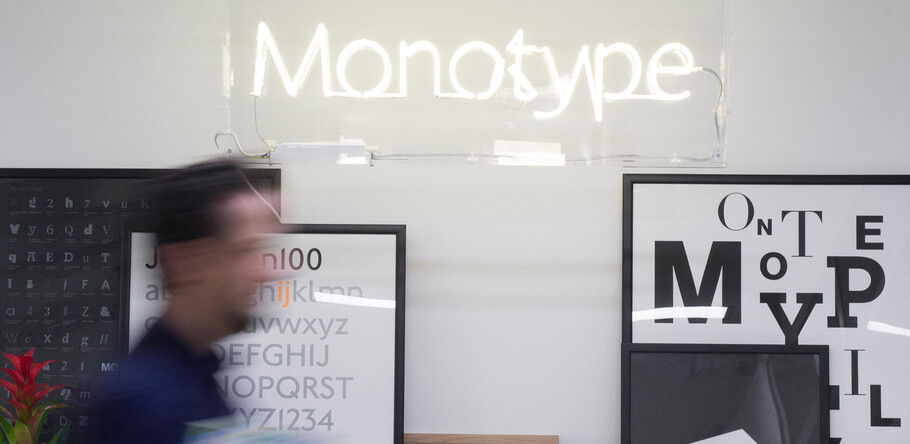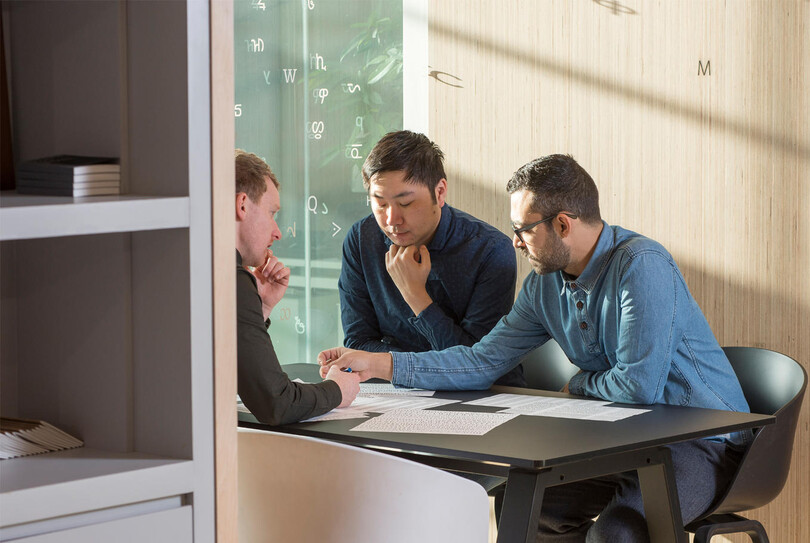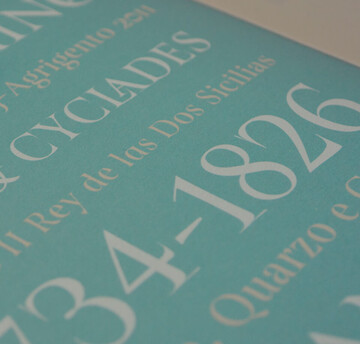Talking creative collaboration with UK Type Director Tom Foley.

Today’s creative departments and agencies have their hands full. Marketing in the digital age is a constant juggling act, and requires more improvisation and adaptability than ever before. No surprise, then, that’s it’s also more important—and more difficult—than ever to keep your teams aligned and working together.
But with challenges come opportunities. In a recent webinar, Tom Foley, UK Type Director for the Monotype Studio, discussed how today’s brands can deliver stunning, impactful creative work—if they can get everyone on the same page.
Collaboration is more than a catchphrase
“Collaboration” is a popular term these days. Companies love to boast about creating “collaborative environments” and encouraging people to “break down barriers” and work together. These are ideals any creative team should pursue, but, perhaps ironically, there’s a lot of process, structure, and thought that goes into it.
“For a successful collaboration to take place, there are two main things to consider,” says Foley. “They aren’t very glamorous, but that have to happen well and every day: Dialogue and process.”
Collaboration is inevitable, he says, but successful collaboration is not. “I say ‘dialogue’ instead of ‘communication,’ because there has to be a back and forth,” says Foley. While communication can often take the form of top-down directive, focusing on dialogue encourages individuals to engage, which can lead to a clearer understanding of roles and expectations, which allows people to focus on their work and contributes to a more collaborative environment.
“Dialogue is important internally, of course, but externally as well,” Foley adds. “We’re a very client-focused business, and we want to do better for the agencies and brands we work with. That means we can’t assume we know what they want, but that we need to listen and engage with them to understand it. That feeds back into our internal process and dialogue.”
Process will be a familiar concept to anyone who works in a commercial design agency, and most customer focused agencies have some sort of defined process. Process should be there to support real needs and objectives, which are, in our case, to use our creative & tech experts to produce excellent brand assets.
“I like to see our process as a flexible framework rather than a rigid structure,” says Foley. “What I mean by this is that is should be versatile enough to support planning and executing projects of any size.”

For this to work, Foley says his team needs agreement and input from the project stakeholders and documentation on internal processes that the team uses, so the framework maps onto the font development process in a meaningful way.
“It’s really important that a process reflects & supports real needs on our side and the client’s side,” he says.
What about last-minute changes?
When it comes to font design, dealing with last-minute changes requires an understanding of how to design and build a typeface strategically. When unexpected requests or requirements emerge, this makes it possible to integrate them without too much pain.
“Starting at the early concept stage, we design many directions on a small character set in a single weight,” says Foley. “Then at the next stage, the prototype stage, we add more characters and start to design in different weights—often extreme weights—on a selected concept.
“At this point a client can make an informed decision about the right concept direction for them, and we move on with developing the design across the required language support, styles and weights etc. This is a pretty standard approach, but what it does is allows us to involve the client at key stages and bring them on a journey.”
By involving the client in this way, and engaging in dialogue, the team is able to mitigate the potential for last-minute changes. But if a last-minute change comes in regardless, Foley says it’s important to be flexible, but honest.
“You have to remain as flexible as possible and accommodate the request as best you can,” Foley says. “But if they suddenly change their mind about fundamental design decisions the day before we deliver final font files, we need to have a reasonable push back as to the impact of that.”
Watch the full webinar today and learn more about how modern teams collaborate, and how your team can collaborate more effectively.








